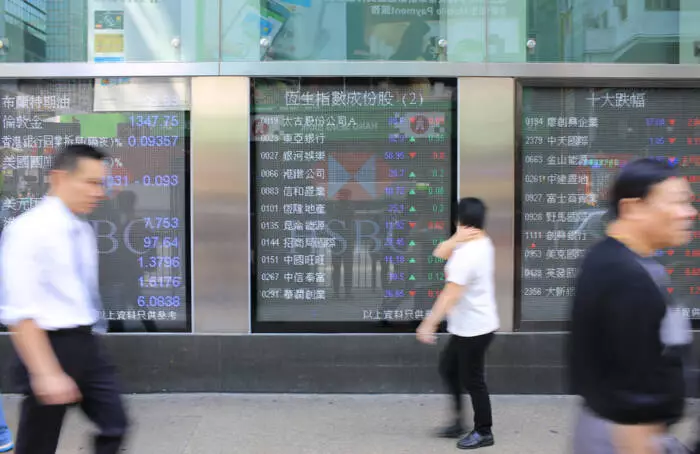The Hang Seng Index has recently experienced a notable decline, plummeting by 6.28% to close at 19,426 during the week ending November 15. This downturn can be largely attributed to the market’s shifting expectations regarding the Federal Reserve’s monetary policy and its direct implications for Asian economies. Investors were rattled by falling hopes for a December rate cut, which is pivotal for economic momentum, especially in emerging markets like China. As traders assessed the impact of newly released economic data from China alongside ongoing tariff threats from former President Trump, anxiety within the market escalated.
The decline was not uniform across sectors. Prominently, the real estate and technology sectors bore the brunt of the losses. The Hang Seng Mainland Properties Index suffered a staggering 10.85% decrease. Among top tech stocks, Alibaba endured a 7.53% slide while Baidu followed closely with a 7.23% drop. Tencent, despite achieving better-than-expected earnings, still lost 5.21%, reflecting broader concerns overshadowing individual performances.
Further compounding the challenges facing the Hang Seng Index were persistent fears surrounding US tariffs and a wobbling economic outlook on the mainland. The CSI 300 Index fell by 3.29%, while the Shanghai Composite Index recorded a decline of 3.52%. Such numbers reflect a reality where external economic pressures are not merely influencing stock prices but are igniting deeper fears of economic instability. Additionally, commodities markets felt the strain; iron ore prices dropped by 3.26%, further exacerbating concerns over China’s demand amid the looming tariff threats. These developments have triggered a reconsideration of investments across multiple sectors, particularly in mining and precious metals.
While the Hang Seng faced turbulent waters, Australia’s ASX 200 Index only managed a slight decline of 0.12% following a 2.17% gain in the previous week. This limited fallout can primarily be attributed to strong performances from technology and banking stocks, where the S&P/ASX All Technology Index notably rallied by 3.89%, buoyed by sound financial reporting from major players like the Commercial Bank of Australia. Conversely, classic mining giants such as BHP and Rio Tinto struggled under the pressure of declining iron ore prices, registering losses of 7.67% and 7.75%, respectively.
Similarly, the broader regional landscape was not without its challenges, as demonstrated by the Nikkei Index in Japan, which experienced a 2.17% drop. This decline slightly reversed the gains accrued the previous week amid a stronger USD/JPY exchange rate. Investors continued to grapple with uncertainties stemming from potential Federal Reserve decisions, which played a critical role in determining market sentiment.
The road ahead for Asian markets appears fraught with challenges, as several factors will influence risk sentiment. Key events on the calendar, such as rate decisions from the People’s Bank of China (PBoC) and the Reserve Bank of Australia (RBA), alongside upcoming US economic data releases and possible stimulus announcements from Beijing, could either stabilize or further complicate the current market landscape. As investors navigate these uncertain terrains, vigilance and strategic planning will be crucial in weathering the storm.

